


Imagine a place of tranquillity, with birdsong, quiet nature, no electricity, and naturally dyed textiles. This place does exist and is Creative Bee farm, a two-hour drive from the Banjara Hills in Hyderabad, located in a small town called Ghatkesar in Telangana, India. Here, I had the opportunity to attend a 4-day workshop on learning hand-weaving techniques such as Batik, Block Print, Ikat and Shibori.
The most fascinating aspect of Creative Bee is their ethos and aim to make the farm a place of creation, sharing and production, all most kindly and compassionately where fair practice is normalised. It is a place where the artist is also a farmer, designer, craftsman and preserver of nature and humanity while embracing all dimensions of the process with love.
On the first day, at the textile boot camp, I was introduced to the process of Batik and Block Print. Bina Rao and Kesav Rao, co-founders of Creative Bee, welcomed us by enthusiastically explaining the origins of their company. They were classmates who fell in love and eventually created the studio when Bina Rao realised the urgent need for preservation and transformation in India’s handloom sector. The exploitation of workers and the fear of the craft not being sustained were real at that time. So, Kesav Rao, Bina’s artist-husband, showed us various examples of how a bold pattern in Batik worked best as a design outcome for contemporisation. Not bound by the traditional use of dye, he started painting with pigment as if the Batik base fabric were his canvas.
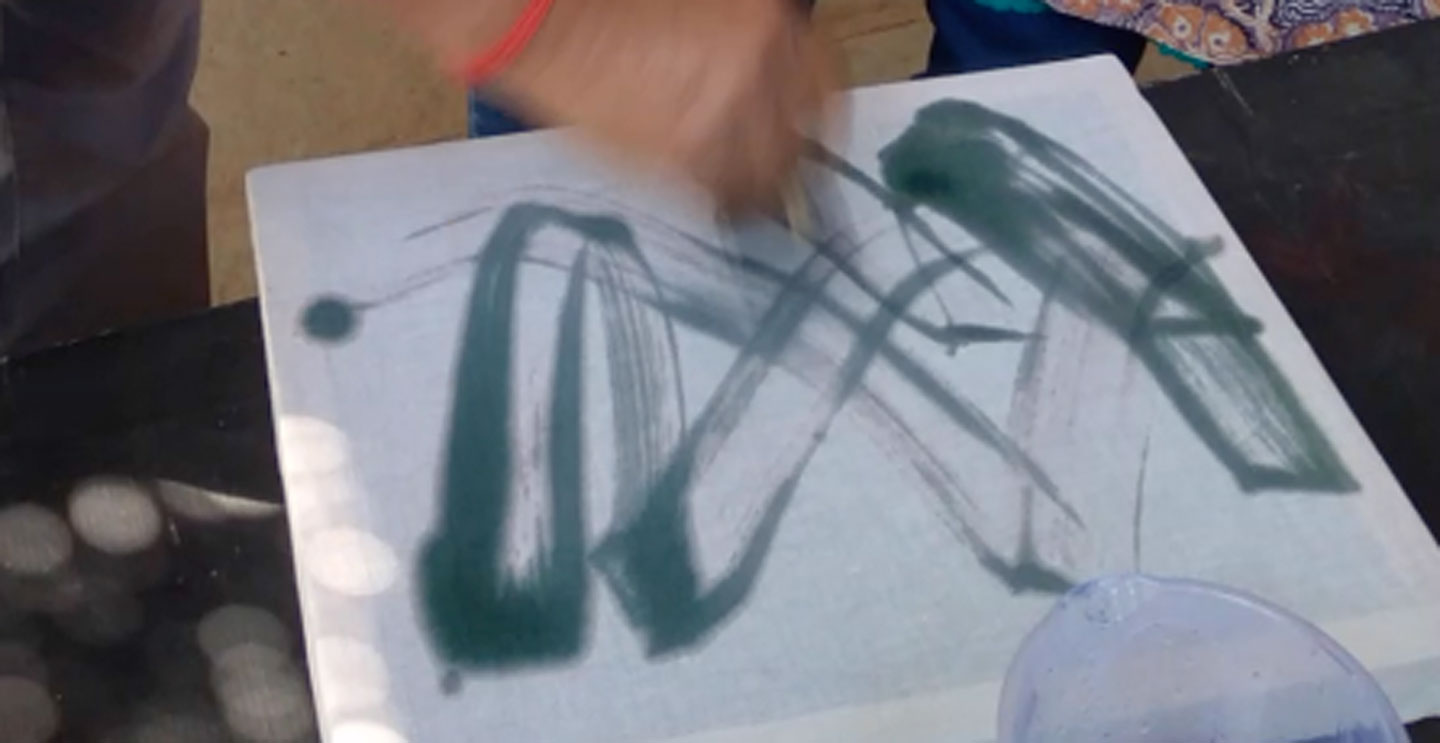
Kesav Rao, using dye inks as paint on Batik base fabric
We learned about “chanting”, a tool used as a pen to create marks on the fabric base with molten wax. The paraffin wax used at the farm is boiled and recycled for multiple uses. The leftover water gets used for the surrounding plants at the farm, thus circling back the material into nature effortlessly. Please note the soapy water is alkaline and therefore safe for plants.
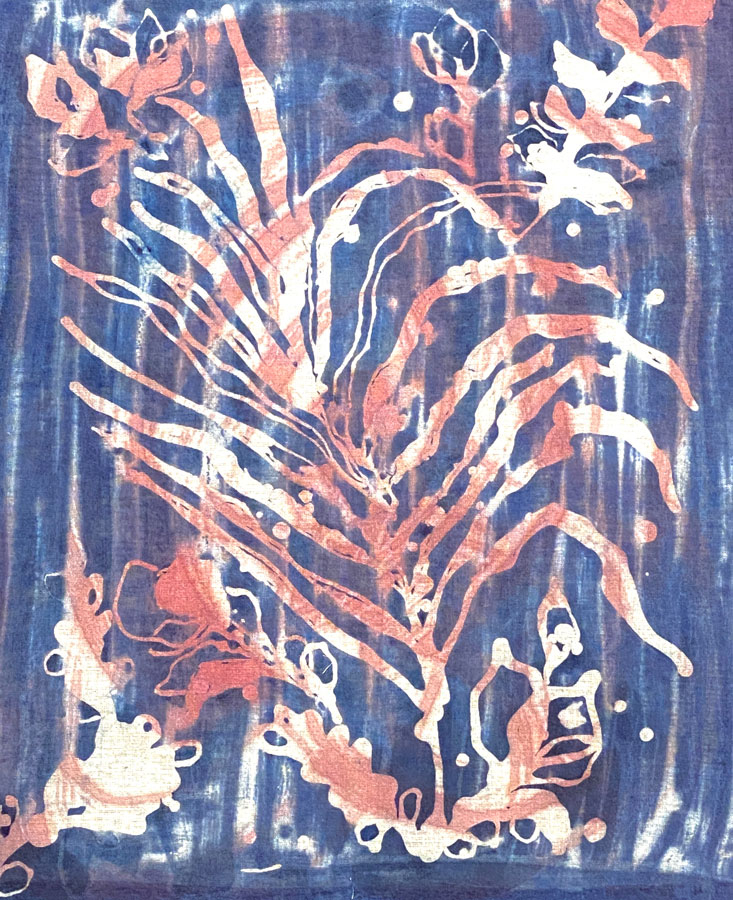
Abstract, contemporary Batik textile print sample on cotton base
Block printing techniques use only natural, reactive or vat dyes at the farm instead of the naphthalene dyes used in the fast fashion industry, which are carcinogenic and harmful. Creative Bee has adopted the healthier working practices of slow fashion, keeping in mind the health and safety of their local artisans and considering what is put back into the earth. While doing the block printing myself, I could relate to how tedious, time-consuming, laborious this practice is for the artisans involved who work all day with absolute precision. The block print pigments are sealed onto the fabrics with a non-electric steamer traditionally used by artisans.
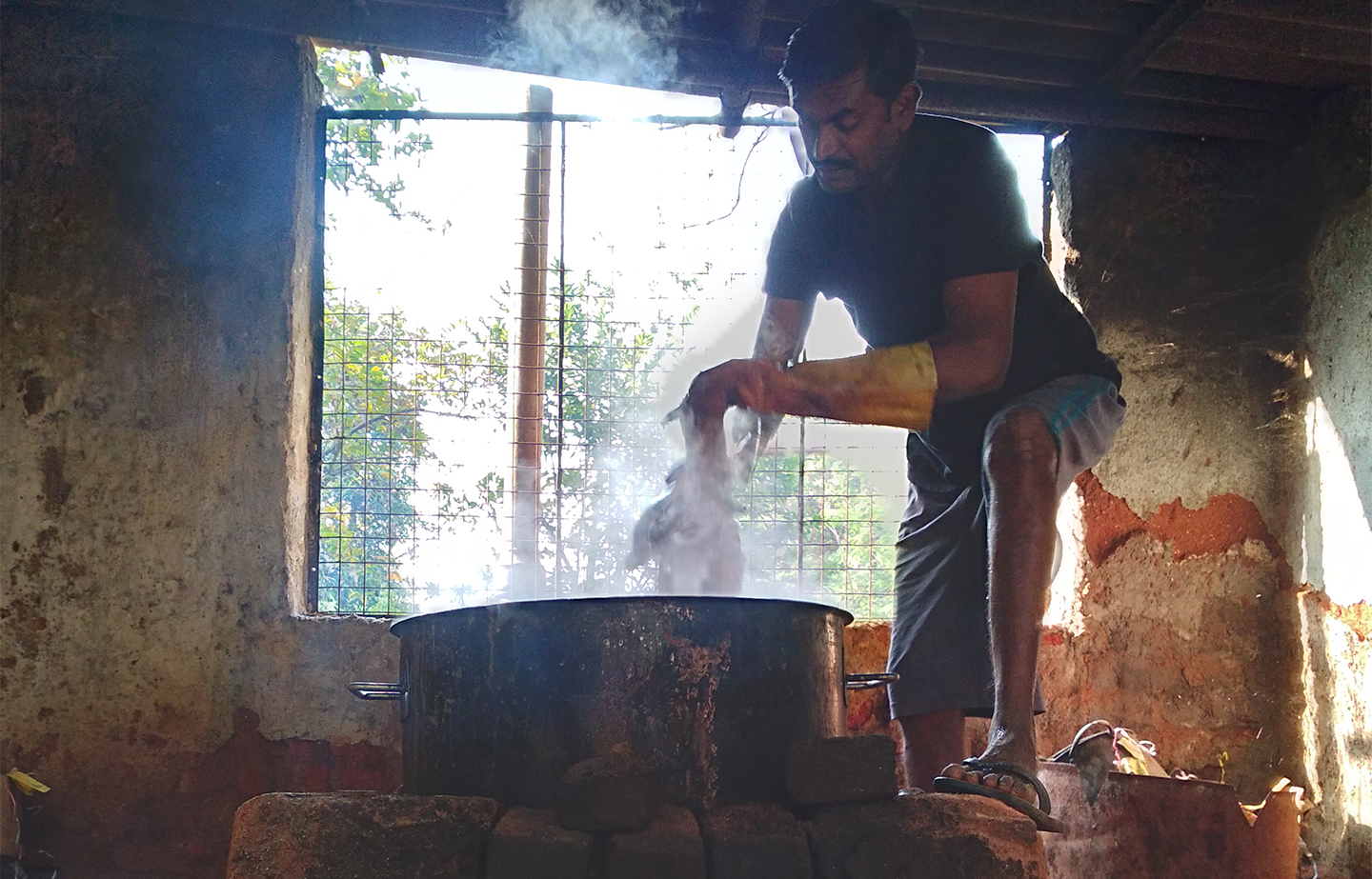
Traditional boiler in the steamer room at the Creative Bee farm
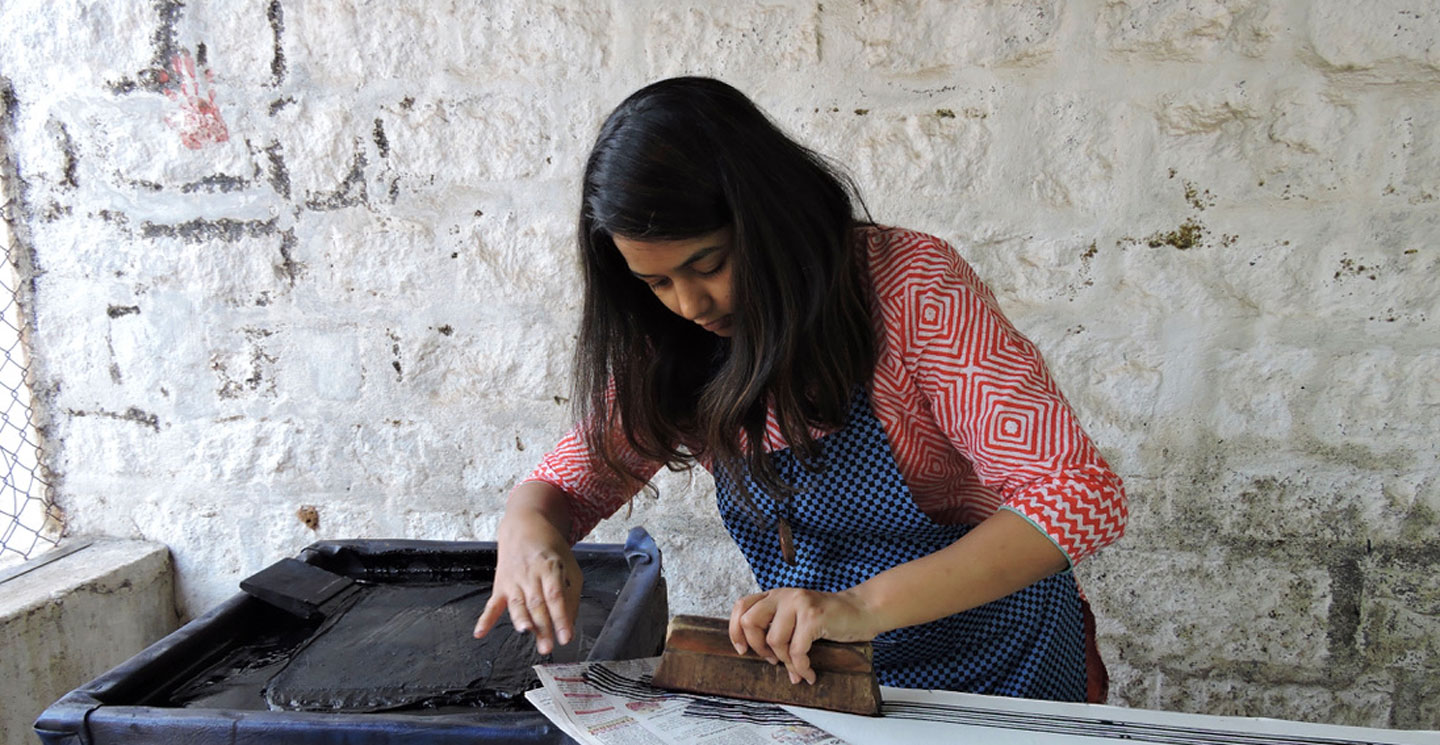
Exploring the process of getting neat corners in Block printing
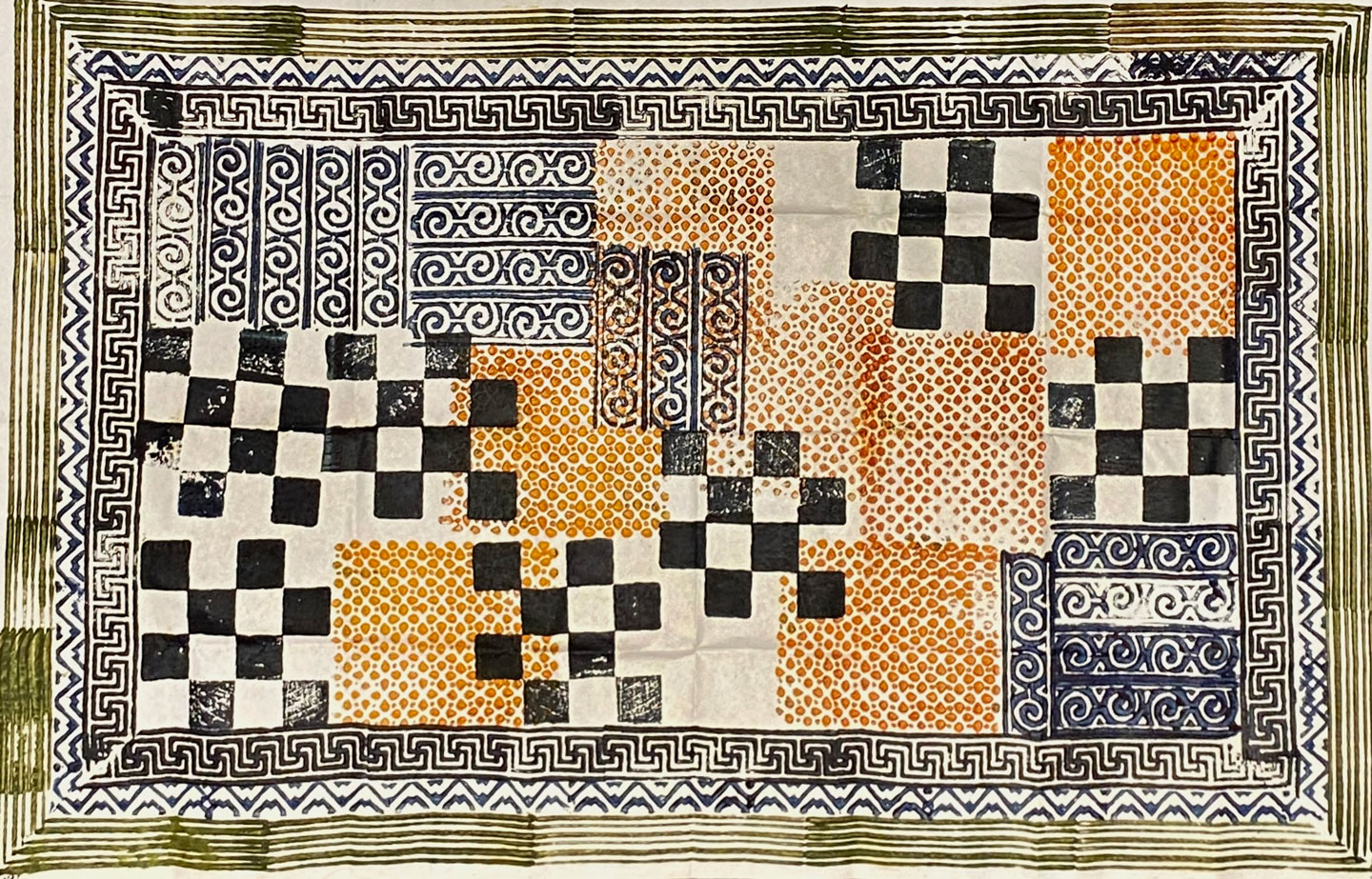
Block print exploration sample on paper
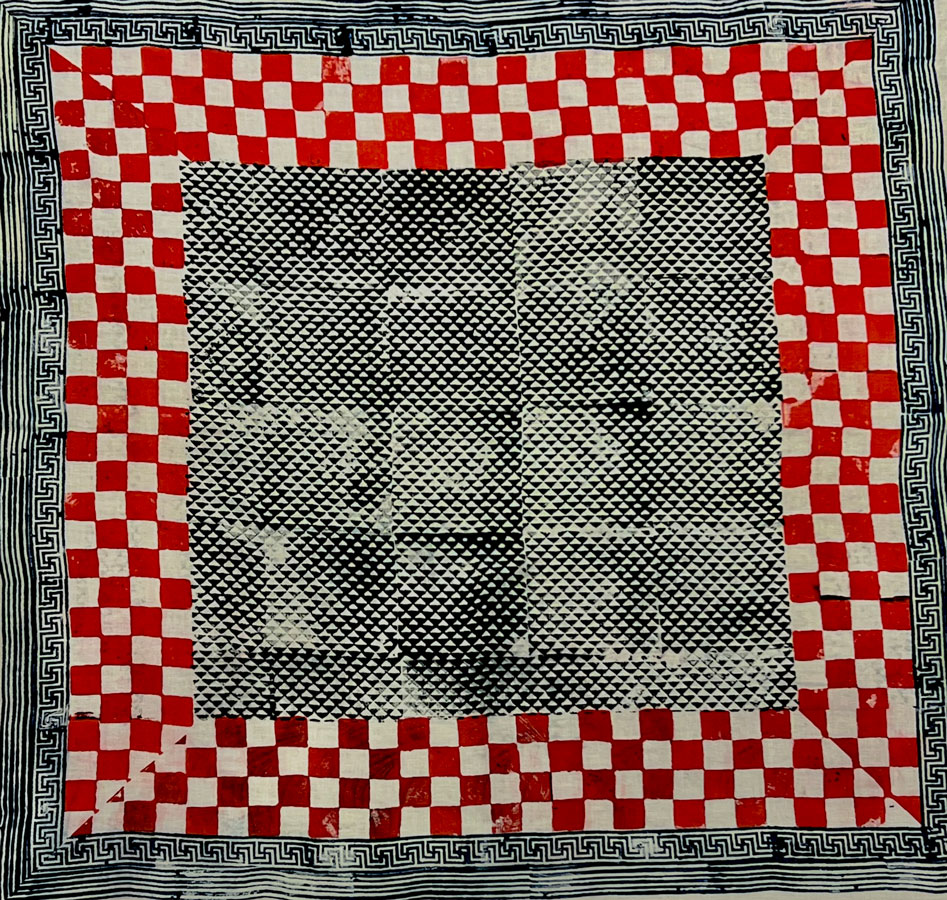
Block print exploration sample on cotton fabric
At each stage of the various production techniques, we saw beautiful examples of how fair-trade practices have been seamlessly integrated into the making of their textiles. They make sure the staff leave their workplaces by 5 pm every day to ensure work-life balance. The organisation also provides education for all children. The effectiveness of this practice was immediately evident when two of the artisan's children at the farm spoke in excellent English with the utmost confidence, explaining what their favourite subjects were and how one girl wanted to be a doctor and her brother wanted to fly planes!
On the second day, we learned about natural dyeing, Shibori, Ikat and steaming the block printed samples made on the first day. We got a quick overview by Kesav Rao, the expert dye master here since he has spent 10 years studying natural dyeing processes and now creates his recipes from scratch revealing new pigments, like an artist creating his palette before painting.
The farm grows plants from which the dyes are extracted. To name a few, the Annato plant’s seeds create an instant orange tint when crushed with water. Since ancient times, this plant has been used in India to make the holy Sindoor – the traditional vermillion red or orange-red cosmetic powder usually worn by Hindu married women along their hairline. A widow does not wear this powder, also known to be cooling and relaxing for the woman and a sexual trigger for the man.
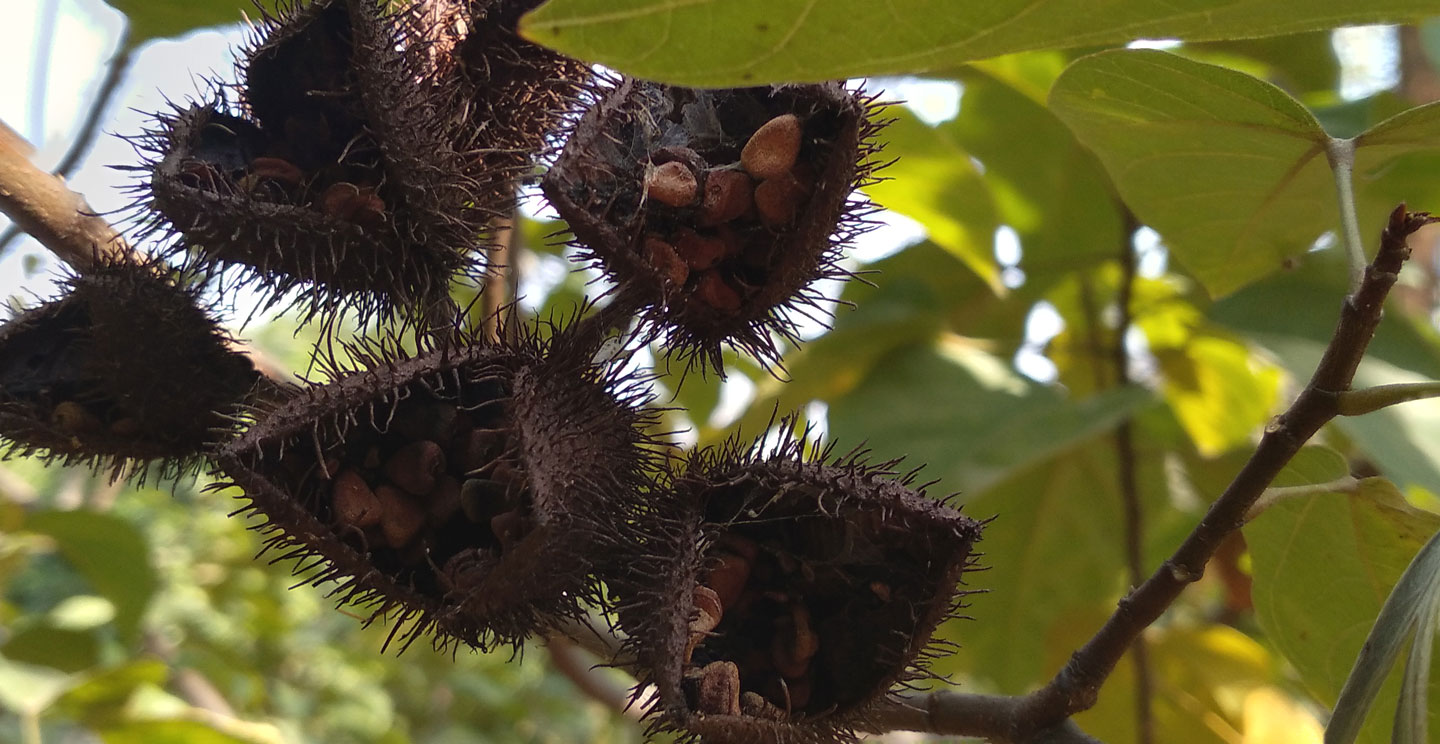
Annato plant seeds at Creative Bee farm
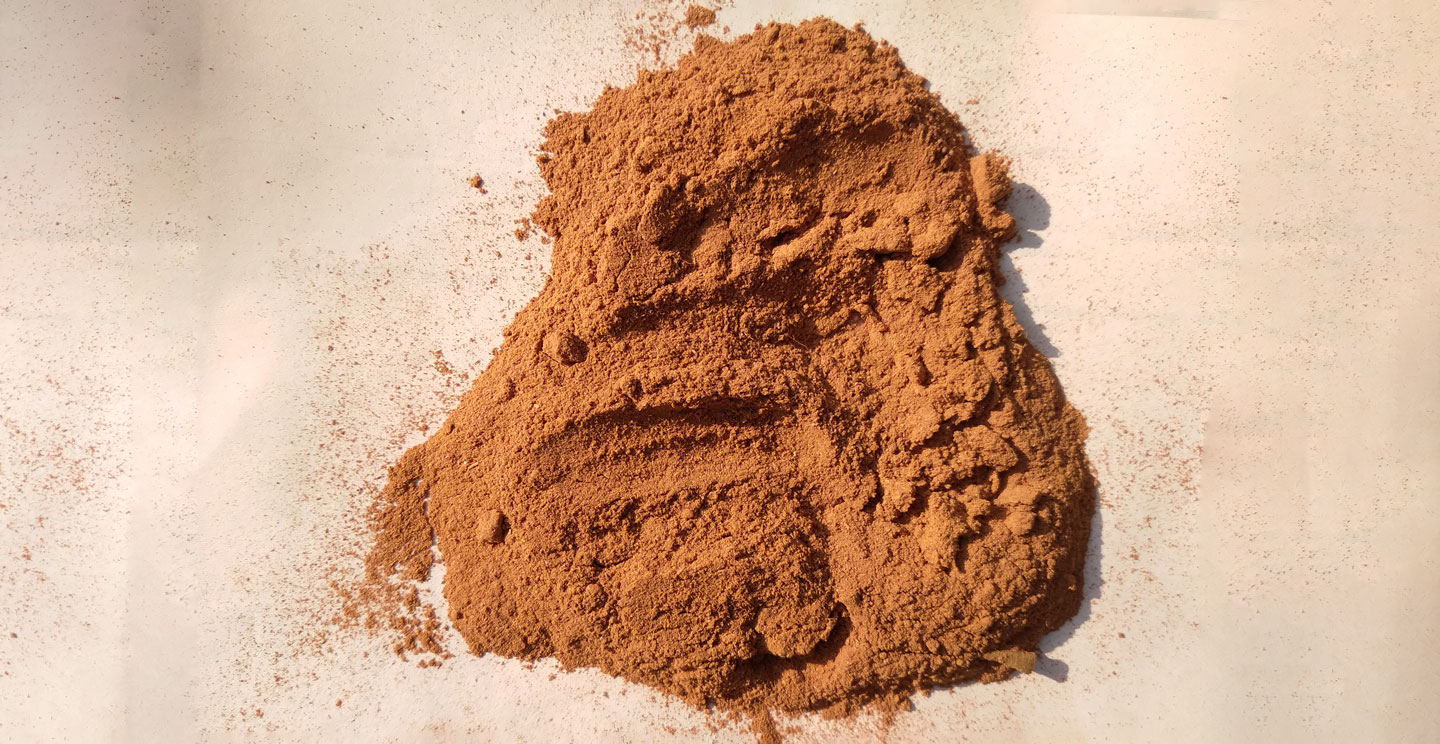
Madder root powder as a natural dye
The locals speak Telugu, which I did not understand, coming from a different region of India. Due to this language barrier, an expert artisan demonstrated in sign language how they use strips of recycled rubber from old tyres to bind a piece of the yarn bundle. This yarn bundle was then dyed into one shade and then retied in another part until desired design outcome was achieved. It looked easy when we saw him in action, but when we gave it a try, it was a whole other story, almost impossible to achieve! When we managed to tie it up, he would give us a gentle nudge to say that it was still too loose and should be made tighter. This was just one binding done, and we had at least 50 more to go to complete one yarn bundle. Artisans use 200 or more such bundles per design! "The older women, who can barely see without their glasses, do this every day in the village," said Bina Rao when she saw us struggling relentlessly! It took us almost an hour to manage to tie one single bundle. The labour put behind this by each artisan dawned upon us at that very moment. This is what they do every day. Our backs were aching, fingers bruised, and we had been sitting on the ground for hours.
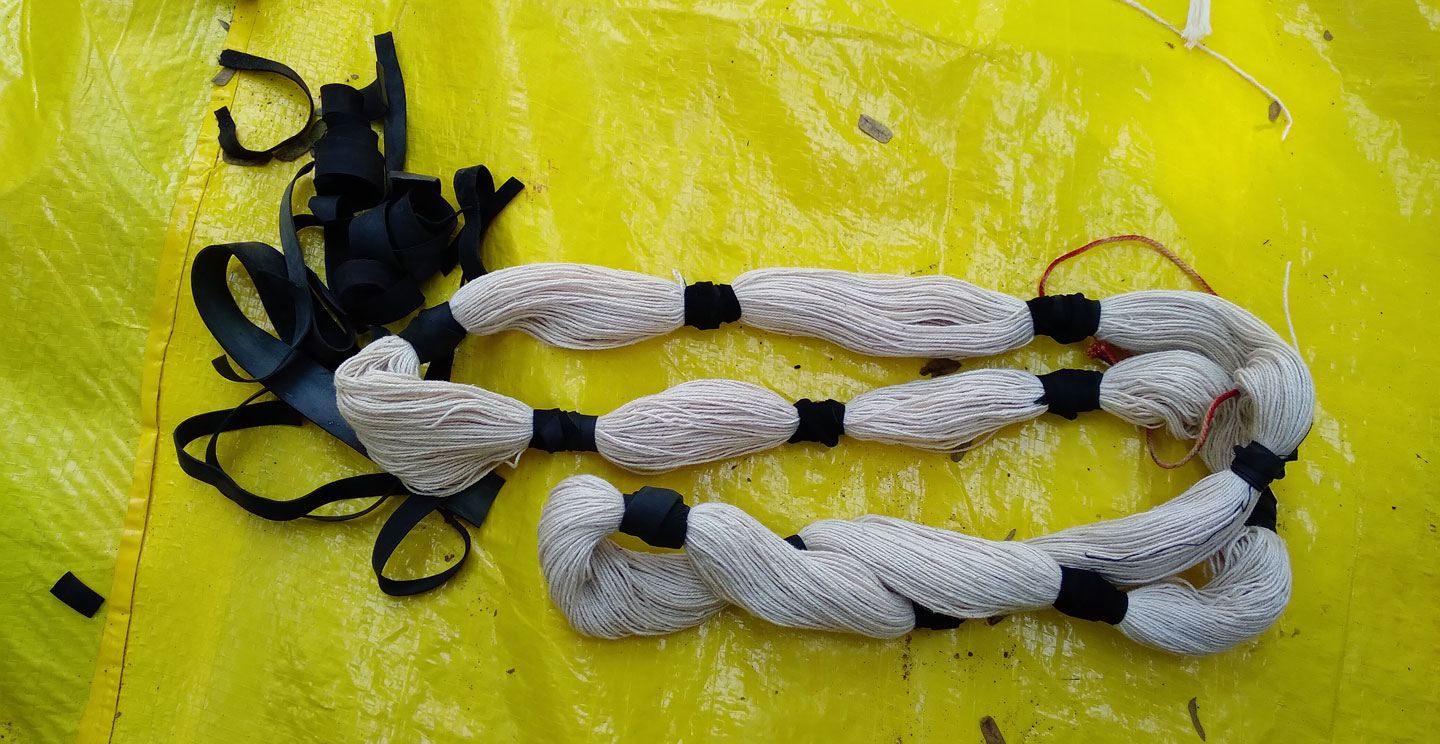
Tying the first yarn bundle with rubber recycled from car tyres
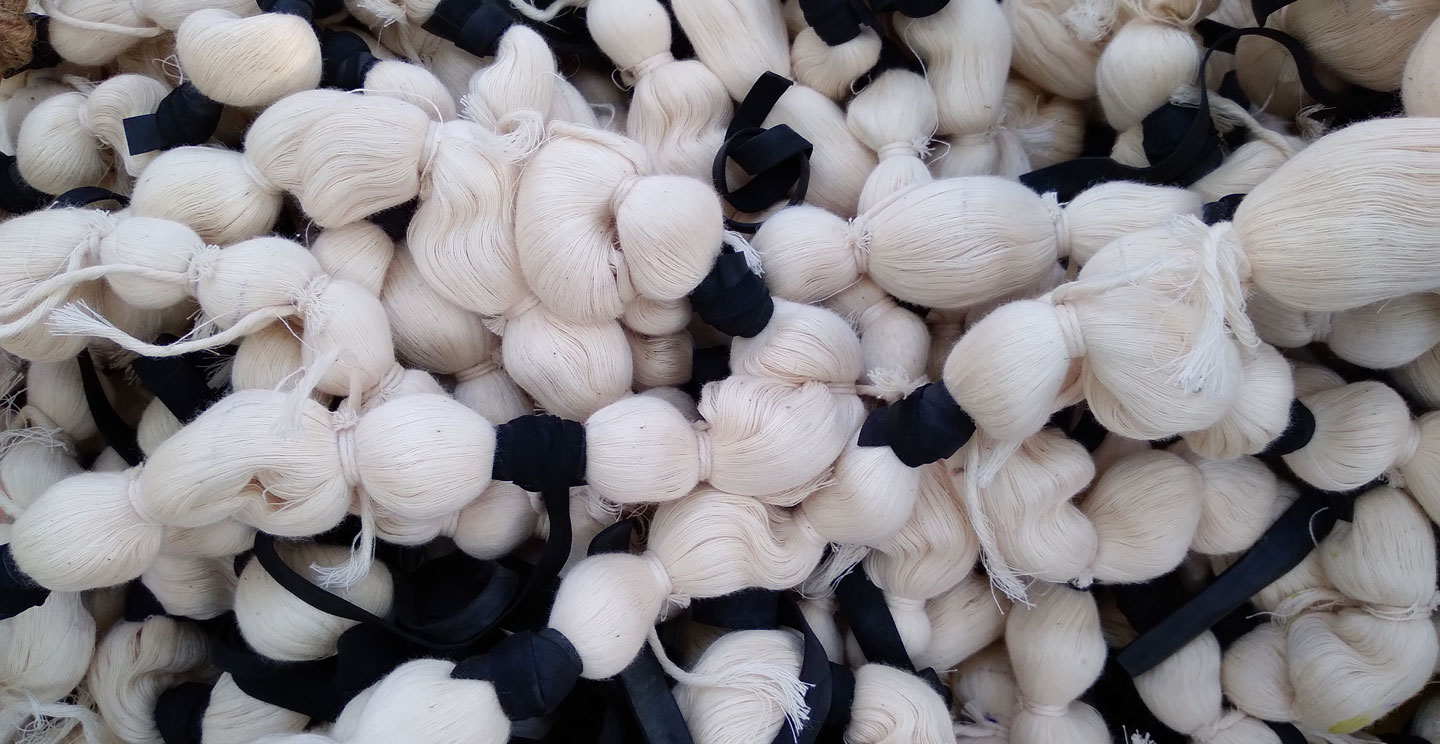
Yarn bundles tied up and kept ready for the dyeing stage of Ikat weaving
We then tried to clamp and stir the fabric in interesting ways to create some tie-dye Shibori. This took another three hours for a small sample.
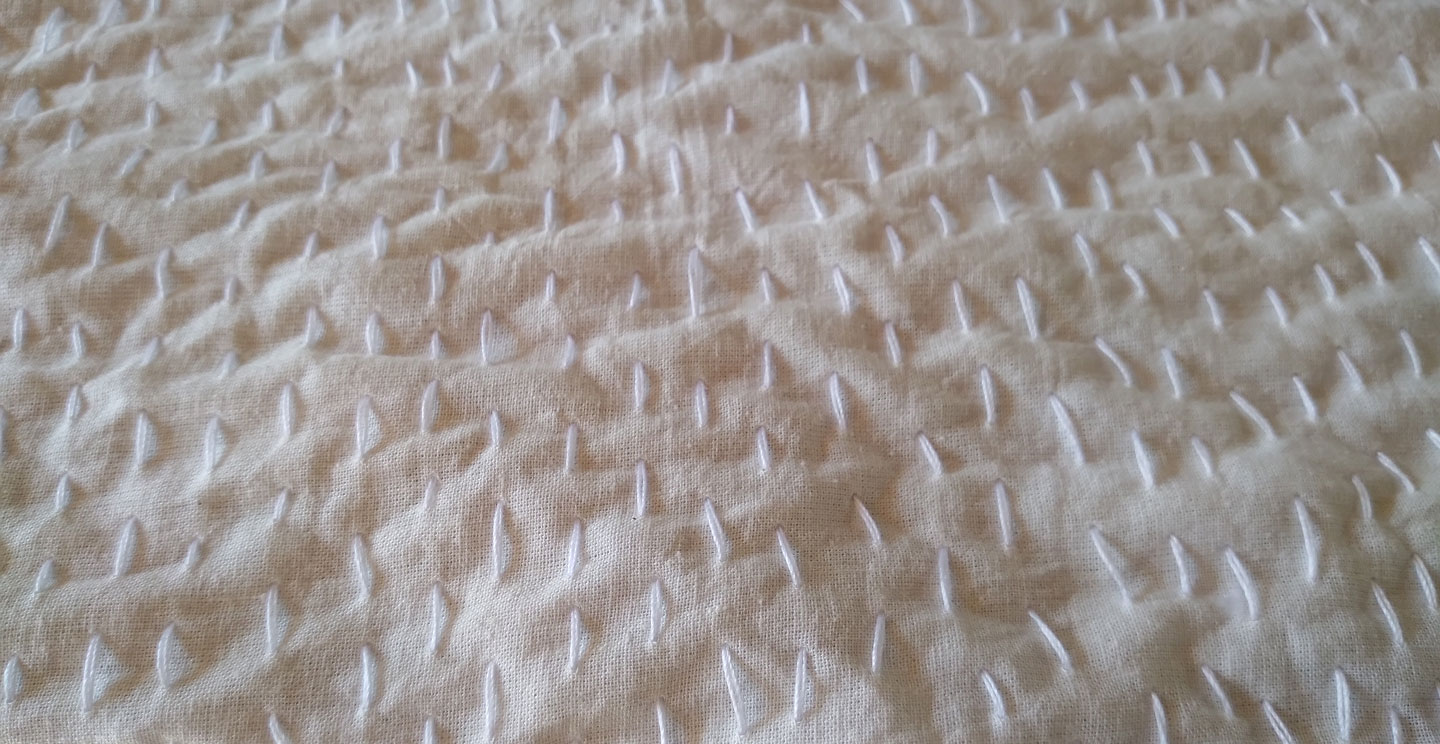
Running stitch preparation to create a gathered shirring fabric before dyeing
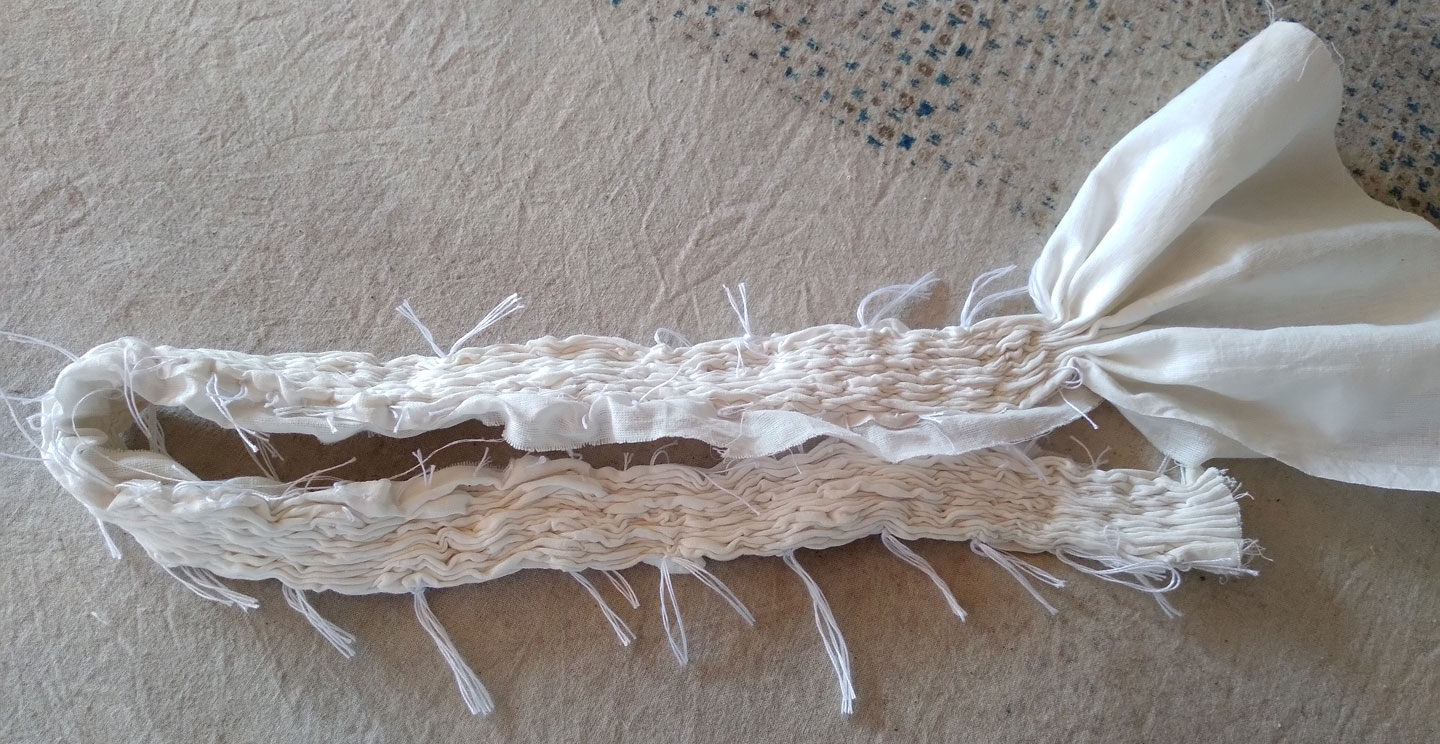
Tightly gathered shirring fabric, kept ready to be dyed for Shibori
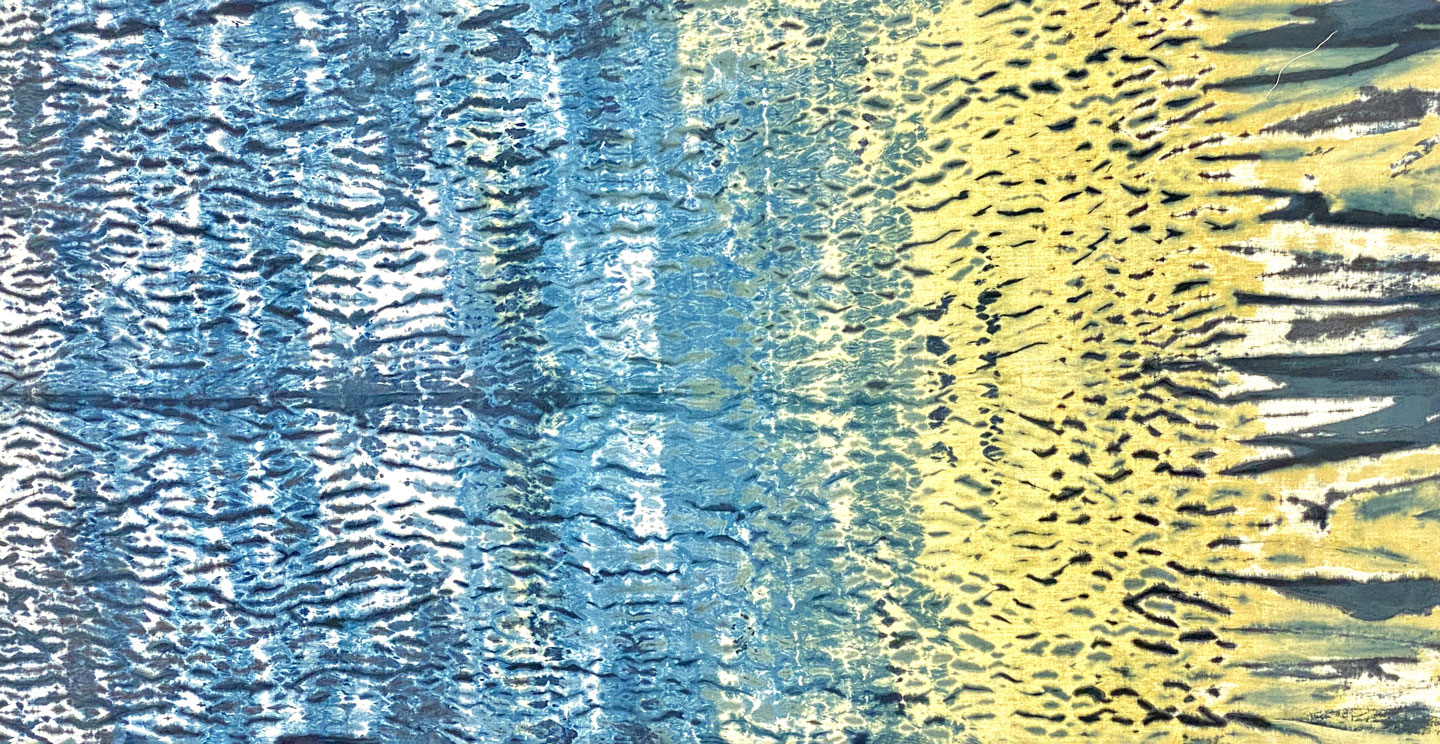
The final outcome of the Shibori stitch resist technique
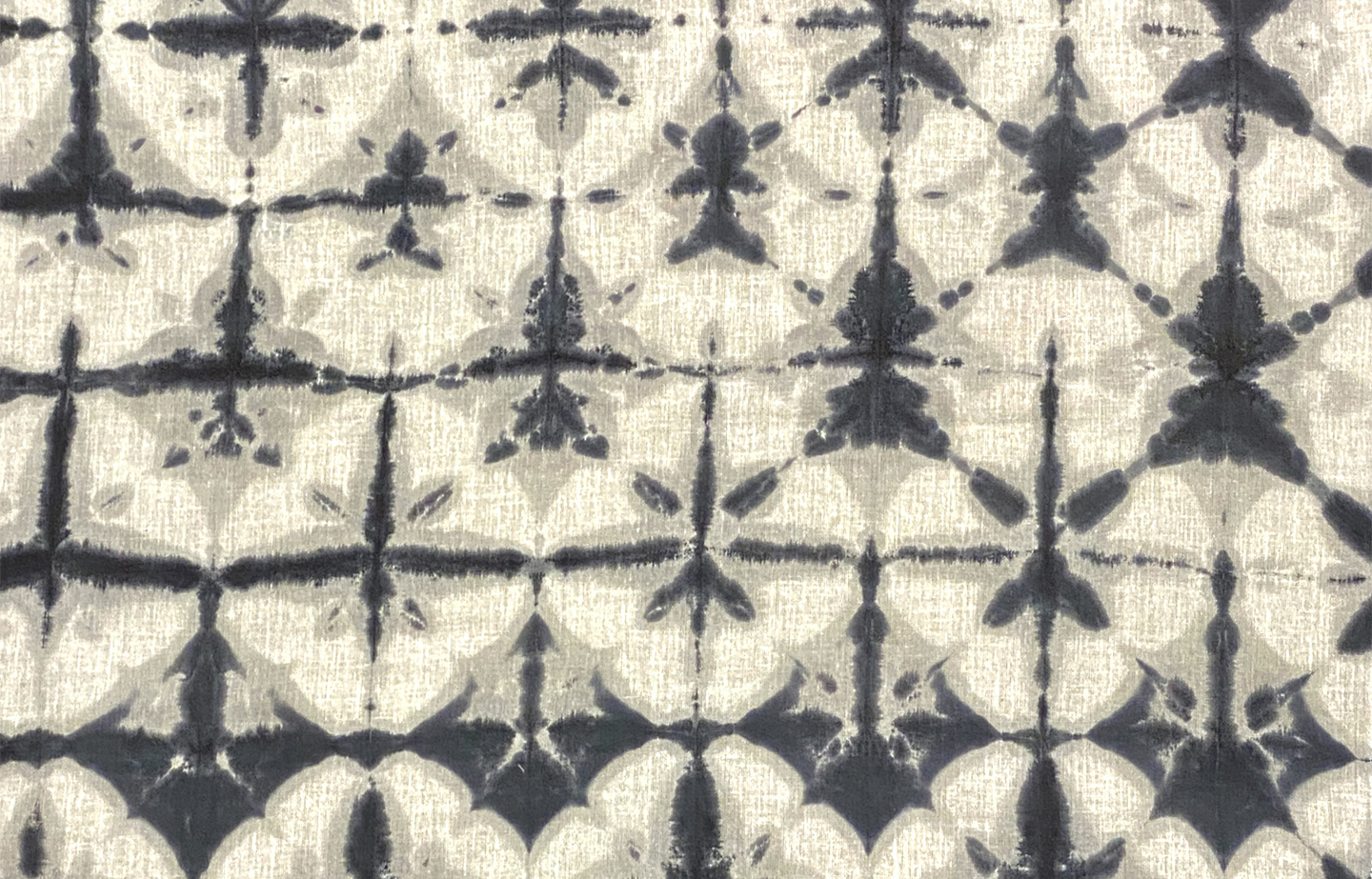
Final outcome of the Shibori Clamp resist dyeing technique
The next day we took a three-hour-long drive to Koyyalagudem village. This quaint, serene village has a population of about 1500 people and looked almost empty when we arrived in the hot afternoon sun. As we walked around, we saw long silk yarns dyed in various colours and patterns being dried in the sun along every lane outside many of the houses.
Fascinated, I moved closer to have a better look when a village lady came out panicking that I was getting too close and the yarn might break! The 20-meter-long yarn warp is hung on two ends and tightened on both edges, stretching the silk fibre to dry effectively. The highly delicate silk yarn, placed in predefined patterns, glistens under the warm Indian sun.
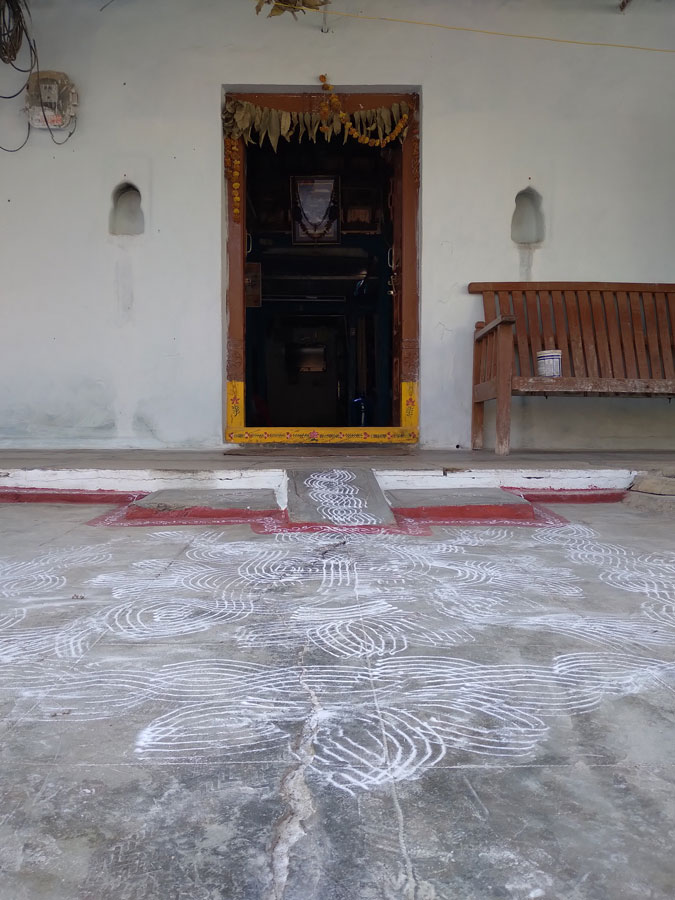
Muggupindi or Rangoli pattern outside a traditional artisan’s house in Koyyalagudem village
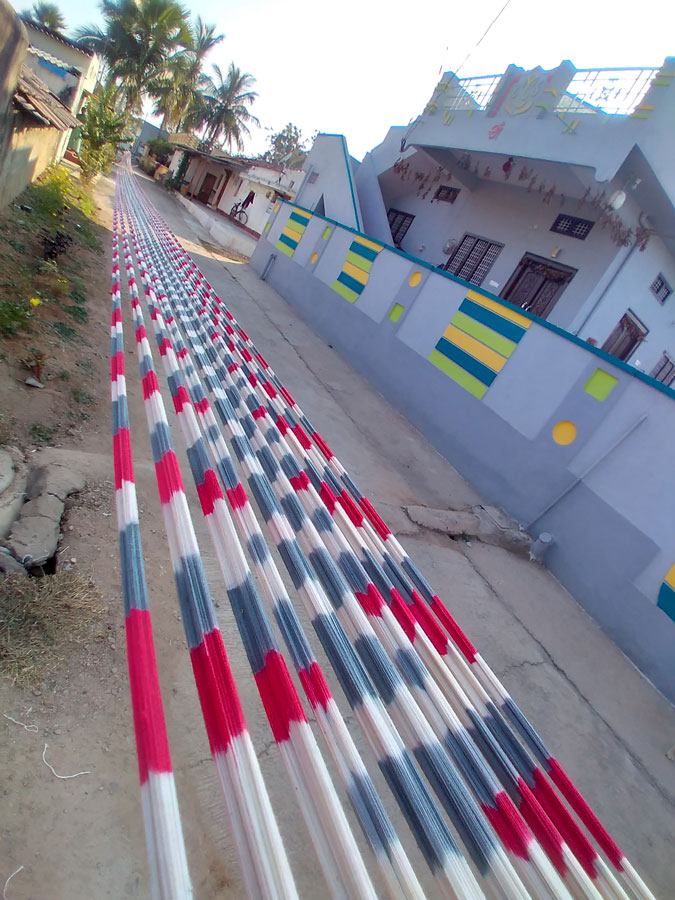
Dyed cotton warp yarns drying out in the sun
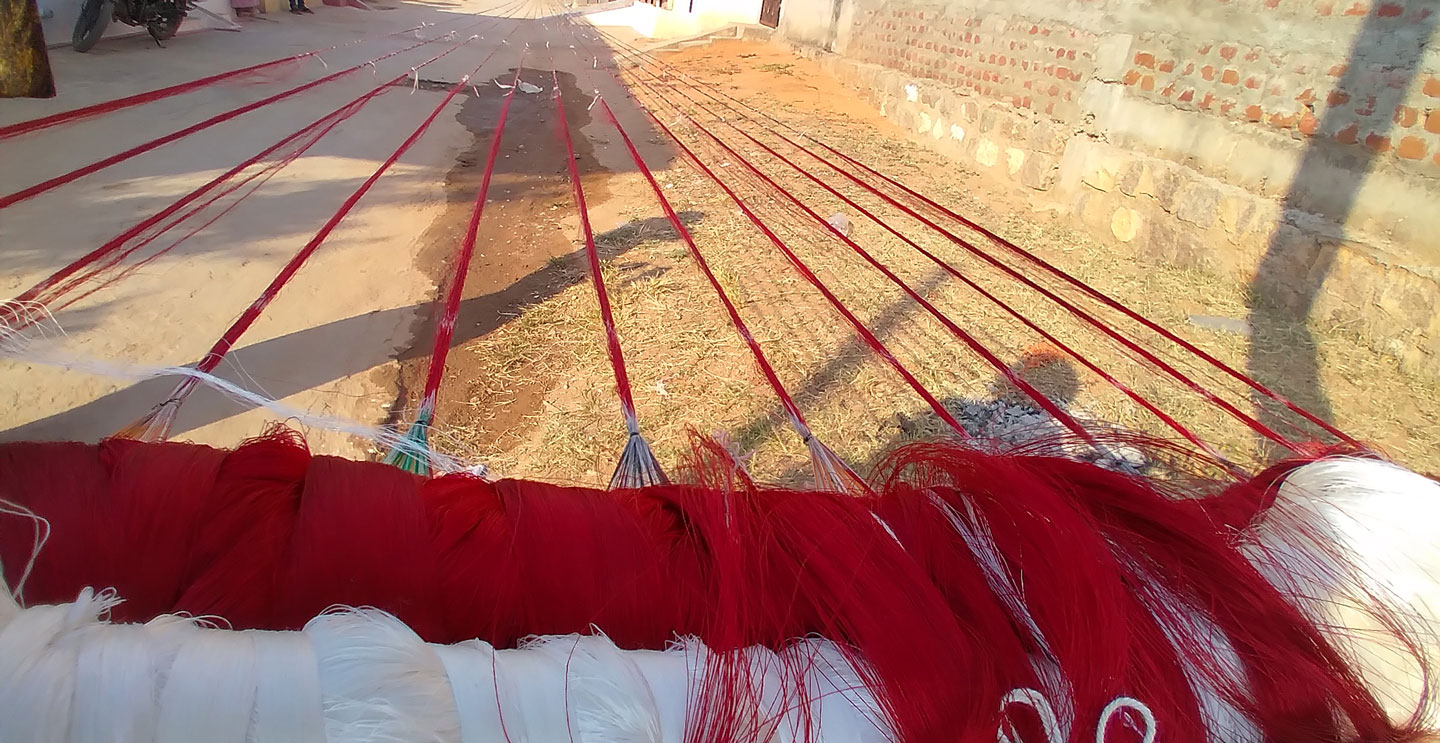
Dyed silk warp yarns drying out in the sun
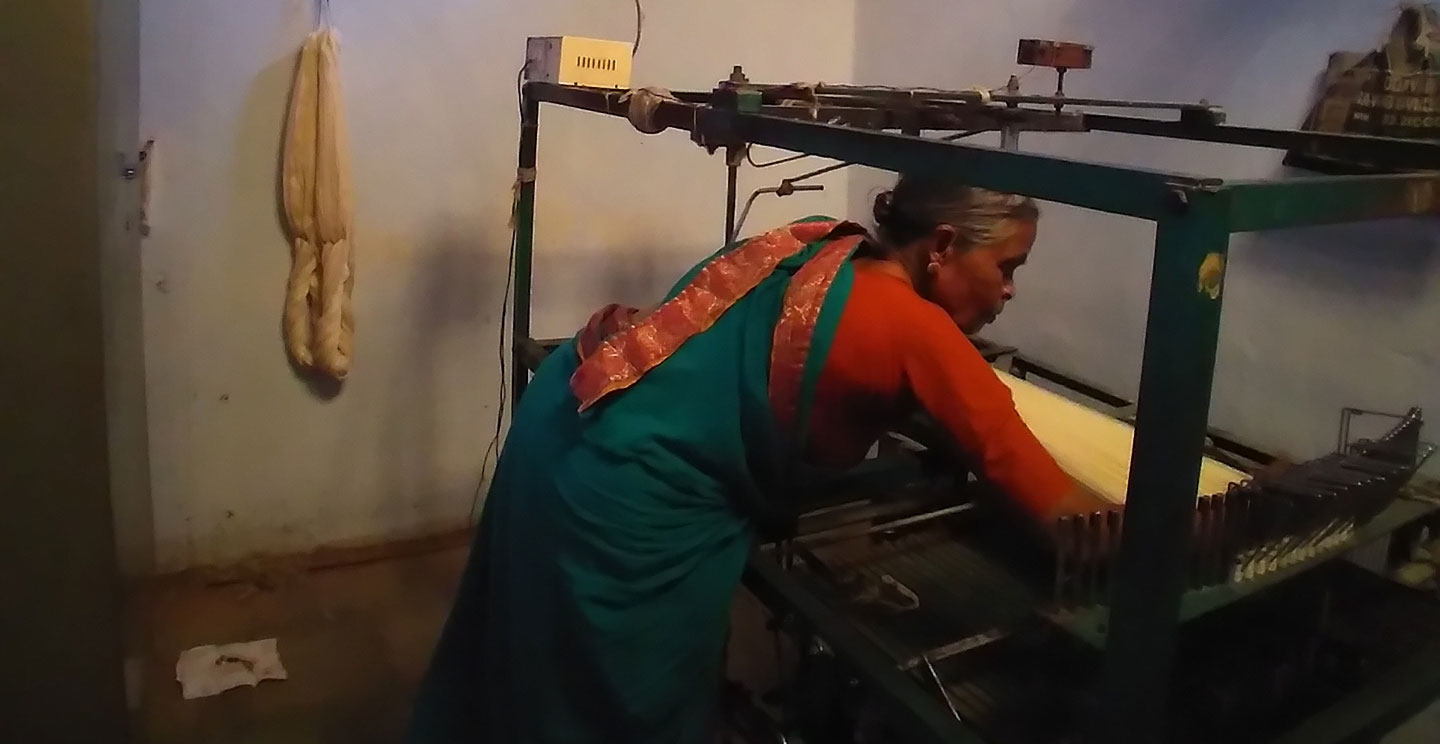
Elderly woman artisan working on the yarn preparation before Ikat weaving in her home
Then we visited another household where a dyer graciously demonstrated how to mix dyes. His hands and feet were scaled, cracked and hardened from past exploitation and various malpractices in the use of naphthalene dyes by corporate but uninformed industry professionals. All this was before Creative Bee adopted the village and transformed their practices into much healthier alternatives, such as reactive and vat dyes. When we asked him why he didn't just refuse to use naphthol dyes, he replied that it was just once in a while and that maybe it wasn't so harmful. Still, he could not say no to companies when they asked for cheaper alternatives, but the price he paid was evident in his scaly feet. I could barely breathe as he boiled the dye in his bucket. The dye has a strong smell even in its healthiest version. He had hundred more bundles to dye before sunset! He added that they would not weave that day because the light would be gone in a few hours.
In yet another household, a bent 70-year-old lady was working on warping the plain yarn into bundles and marking the design pattern out on the large loom sitting in her lounge with the television broadcasting local news. So, we tried to communicate through sign language as we realised that her whole family - each member – was involved in this activity. Yes, their children come back from school and help with the weaving. What I remember most is their cottages filled with different machinery instead of furniture that you might typically find inside a village household.
Suddenly I realised that the whole village is a cottage version of a large factory where each process operates in various households, and each family specialises in one part of creating this Ikat design as an expert. We couldn't stay there after 5 pm because the sunset would have made it too dark to walk around, and we met the weaver who told us that he had been forced to shut down his loom that day for the same reason.
Seeing the challenges they face at every step of the process and the whole village working together to make a single Ikat design was eye-opening and humbling! In this 4-day visit, I realised that, for these artisans, what Creative Bee has been creating over decades of hard work is a beautifully integrated model of compassion at every step of the design process.
Creative Bee has made every practice fairer so that future generations can choose to sustain this inherited craft and legacy with much more empowerment than their elders and much less vulnerability. It is indeed a labour of love! What is missing is just more collaborative models to be followed by other industry professionals who appreciate slow fashion and sustain the livelihoods of these artisans not just for one collection but as an ongoing social responsibility. This traditional craftsmanship is a national treasure.
Shweta Shah
Tutor in Fabrics and Materials and Fashion Illustration courses, Mumbai



